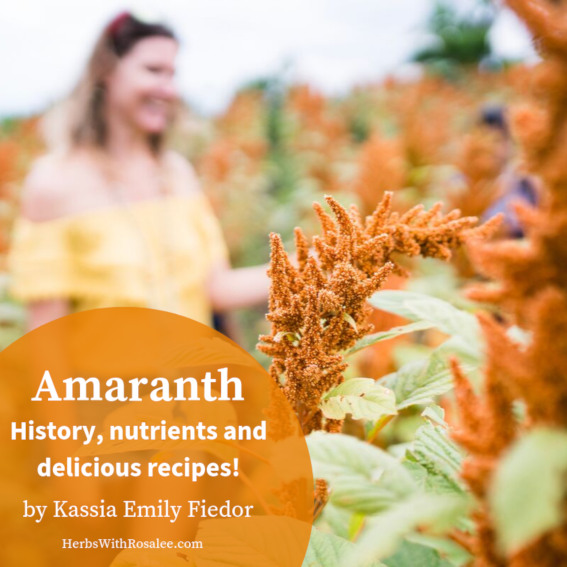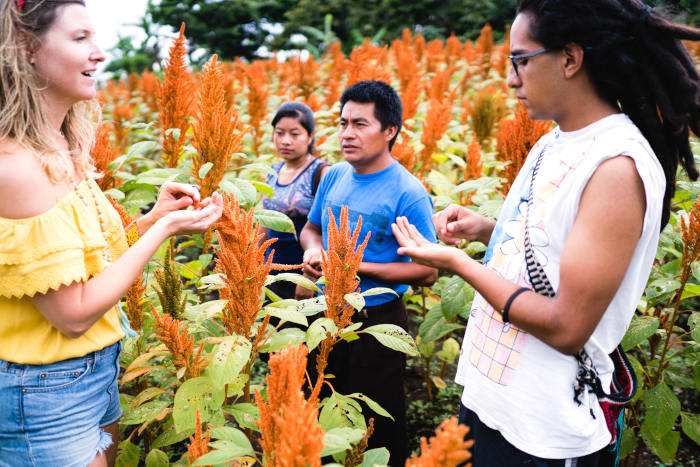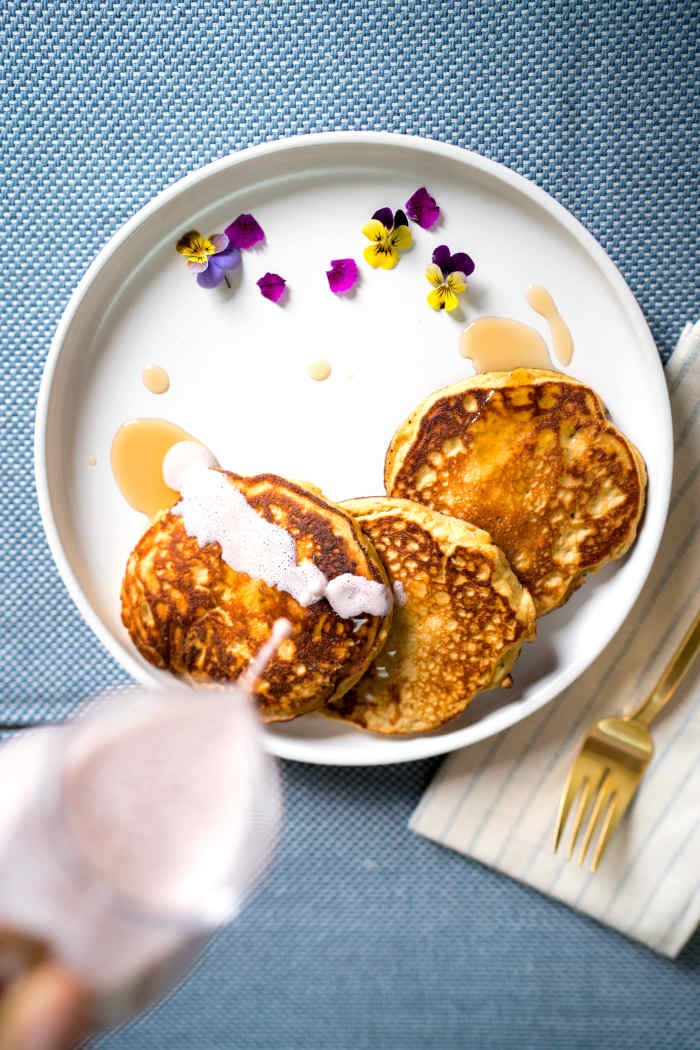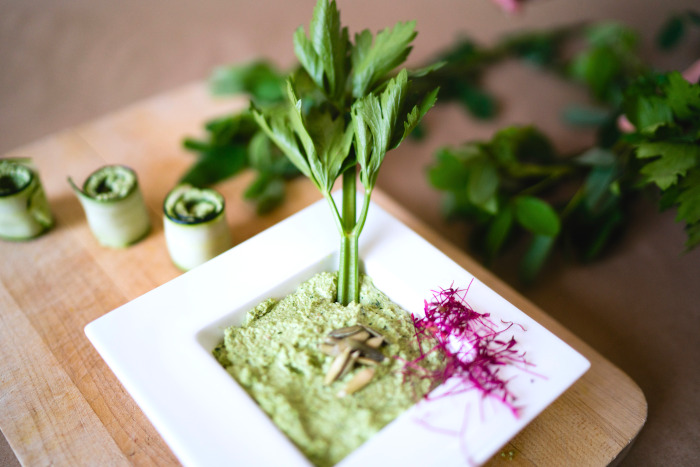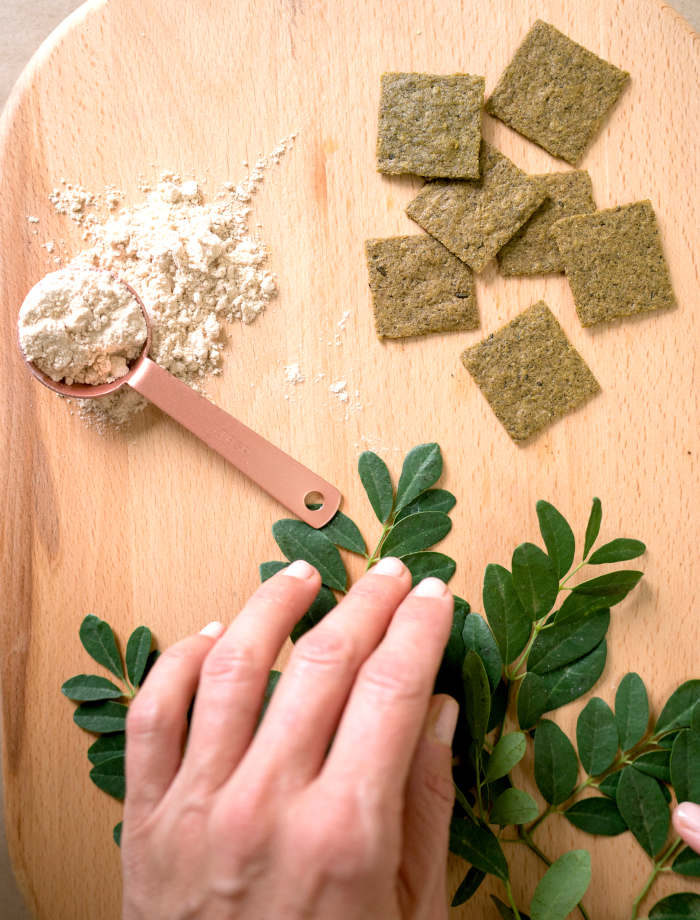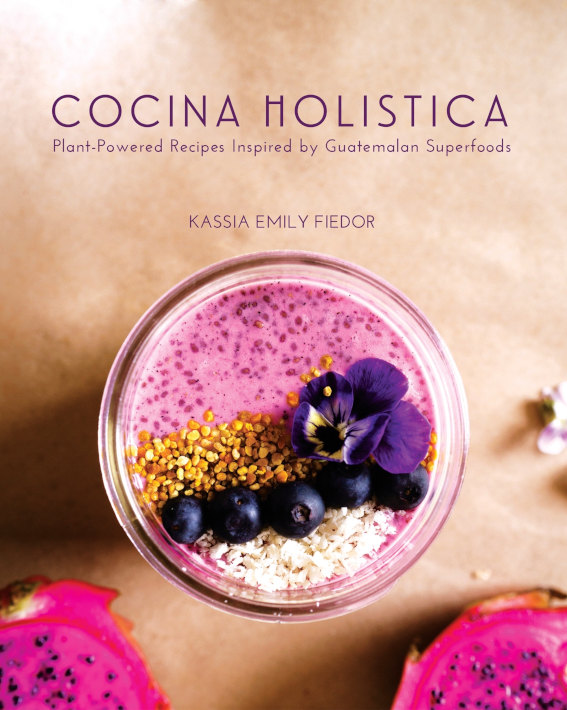Get weekly tips, recipes, and my Herbal Jumpstart e-course! Sign up for free today.

Amaranth Recipes
By Kassia Emily Fiedor
Share this! |
|
If you haven’t started using Amaranth yet, now is the time! Amaranth has endured the threat of near extinction, and is now taking center stage as the “grain of the future.” Actually a seed, this tiny superfood was so sacred to Mesoamerican ancestors for its nutrient density that it was used in religious ceremonies and even considered a deity in some cultures. In my new cookbook, Cocina Holistica, Plant-Powered Recipes Inspired by Guatemalan Superfoods, amaranth is observed with reverence once again, given a modern twist in culinary creations that celebrate the whole plant - from seed to leaf. Read on for a brief history, nutritional benefits, and amaranth recipes!
The Amaranth Plant
There are over 60 known varieties of Amaranthus, which are known for their wide green/pink leaves and beautiful bright red, orange, or purple flowers. The three species commonly grown for their edible seeds are Amaranthus caudatus, Amaranthus cruenus, and Amaranthus hypochondriacus. The Greek word amarantos, meaning “never fading” or “one that does not wither” is very fitting - the flowers on this resilient and fast growing plant remain vibrant long after harvesting.
Amaranth was a staple food in the Mayan and Aztec diets, and is considered native to Peru. Some estimate it was domesticated as far back as 8,000 years ago! Amaranth was regarded as a sacred nutritious seed in ancient Mesoamerica. This nutritional powerhouse, actually a complete protein, was not only seen as equally important to their diets as corn and beans, it was also used in religious practices. The seed was mixed with honey to create images of their deities and then, in a form of worship, broken into pieces and eaten. When colonizing Catholics caught wind of this, it was banned, and anyone found with the seed or plant was punished. True to its Greek name, amaranth survived the threat of near eradication thanks to brave souls who saved the seeds and its ability to spread easily.
In Guatemala, it resurfaced after a few hundred years of oppression, but those cultivating it during the Civil War of the 80’s were persecuted and again it was nearly lost. I visited a group of indigenous Mayan widows in an area called Rabinal who had lost their husbands in the war and are now successfully rebuilding (and nourishing) their villages by cultivating, eating, and selling their organic amaranth. This story imbues the humble amaranth with an essence of empowerment, transformation, and true resilience!
An interesting anecdote about this mighty seed - amaranth was among one of the nutritious snacks made by NASA chefs for the astronauts on board The Space Shuttle Atlantis in 1985! Not only were small cookies made out of the seed, the crew-members also experimented with germinating amaranth in space.
Amaranth Nutrition
- Deemed the “new kale” by some health experts, amaranth leaves, or “bledo” in Spanish, are rich in protein, potassium, iron, magnesium, calcium, and folate, as well as vitamins A and C
- The seed is naturally gluten-free
- The tiny seed packs a huge protein punch and includes high levels of antiviral lysine
- The seed contains significantly more calcium than milk
- The seed also contains high amounts of tocotrienols, counterparts of vitamin E rarely found in plants which have powerful neuroprotective, anti-tumor, antioxidant, and cholesterol-lowering properties
- Results of a study done by the Institute of Nutrition of Central America and Panama at Guatemala in 1993 found that in comparison to cheese protein, amaranth “is among the highest in nutritive quality of vegetable origin and close to those of animal origin products.”
Below are three recipes from my book, Cocina Holistica, using amaranth seed flour and leaf. Enjoy these modern creations inspired by this wonderful ancestral plant with a powerful history that is experiencing a rebirth!
Amaranth Recipes: Amaranth Pancakes with Cardamom Hibiscus Cashew Cream
Channel the strength of the Mayans by starting your day with these protein-rich, fluffy gluten-free pancakes! Make them extra decadent with the Cardamom Hibiscus Cashew Cream but, if you don’t have time, just use your favorite pancake toppings.
Pancakes
Dry ingredients:
- ¼ cup amaranth flour (or buckwheat flour)
- 2 tablespoons + 1 teaspoon coconut flour (do not substitute)
- 1 teaspoon spices (cinnamon, cloves, ginger, and/or cardamom)
- ½ teaspoon baking powder
- 2 pinches of salt
Wet ingredients:
- ¼ cup coconut milk
- 3 eggs
- 1 tablespoon honey
- 1 teaspoon apple cider vinegar
Directions:
In a medium bowl, combine all the dry ingredients. In a small bowl or cup, mix all the wet ingredients until the eggs are fully whisked. Add the egg mixture to the flour mixture, and stir well until you have an incorporated batter.
Heat a medium size skillet or griddle to medium-low heat, and add in a tablespoon of butter or coconut oil.
When the oil is hot, pour the batter onto the griddle, using about ¼ cup for each pancake. Cook until golden brown on both sides.
Makes about 8 small pancakes.
Serve with cardamom cashew cream and/or maple syrup.
Cardamom Cashew Cream
Ingredients
- ½ cup dried hibiscus flowers
- ½ cup boiling water
- ¼ cup raw cashews
- 1 drop orange essential oil (or zest of ½ orange)
- juice of 1 orange
- 1 tablespoon maple syrup
- ¼ teaspoon cardamom
- pinch of salt
Directions
Add hibiscus and boiling water to a heatproof container. Strain and add to a high-speed blender.
Add cashews, orange EO and juice, lemon, maple syrup, cardamom, and salt to the blender and blend until smooth. Adjust sweetness and flavors to your liking.
Amaranth Recipes: Amaranth Leaf Dip
This dip ensures a substantial dose of nutritious amaranth greens, as well as quality fats from seeds, coconut, and avocado oil, making this the perfect nutrient-dense dip to accompany a cleanse or detox.
- 1 cup sunflower seeds, soaked in water 6-8 hours, strained
- 1 cup cilantro
- 1 cup amaranth leaves, packed
- ½ cup pumpkin seeds, soaked in water 6-8 hours, strained
- ¼ cup lemon juice
- 1/3 cup shredded coconut (or 2/3 fresh coconut meat)
- 3 celery stalks, chopped
- ¼ cup avocado oil
- 1 inch piece of ginger
- 1 tablespoon sea salt
In a food processor, combine all the ingredients and pulse until you have a smooth paste.
If your food processor isn’t large enough, do 2 or 3 batches.
Makes 2 cups.
Store in an airtight container 4-5 days.
Amaranth Recipes: Amaranth Moringa Crackers
These superfood crackers are addicting, and not to mention really
easy! Naturally gluten free, they’re the perfect snack for any
vegetarian as the synergy of amaranth and moringa provide a well
balanced complete protein. I love the flavors of thyme and rosemary, but
feel free to experiment with your favorite aromatic herbs!
- 1 cup amaranth flour
- 3 tablespoons olive oil
- ¼ cup water
- ½ teaspoon baking powder
- ½ teaspoon garlic powder
- 1 teaspoon thyme
- 1 tablespoon fresh rosemary
- ½ rounded teaspoon salt
- 1 tablespoon moringa
Preheat oven to 350˚ F.
Place all of the ingredients in a bowl
and mix well with your hands. The dough will be pliable and spongy.
Don't be tempted to add more liquid, simply place on top of wax paper
and gently knead it a little. If the dough is sticky add a little more
flour and knead until smooth.
Flatten the dough into a rectangle shape and place another piece of wax paper on top.
Roll out the dough using a rolling pin to a thickness of 5mm (1/5 of an inch). Remove the top wax paper and, using an oiled sharp knife, score the dough into desired shapes (a grid of squares of about 1 1/2 inches is good).
Place the dough and wax paper on a baking tray. Gently prick each cracker with a fork to prevent them puffing up while baking.
Bake for 25 minutes, or until golden around the edges.
Remove from oven and allow to cool. They will crisp up as they cool.
Store in an airtight container.
Makes 48 crackers.
Special Limited Time Offer: Book Bonus Goodies!
Order Kassia’s book, Cocina Holistica by October 1st and you’ll get these special bonuses.
- 15% off the paperback
- Free copy of the Cocina Holistica e-book download ($18 value)
To get your book and bonuses use the code: amaranth
Click here to order: http://www.infusedholistickitchen.com/cookbook.html
Cocina Holistica is a love letter to Guatemala. In her debut cookbook, Kassia Fiedor infuses ancestral ingredients into healing plant-based dishes. Filled with stunning photographs of Guatemala’s countryside and farms, she hopes to inspire renewed respect for indigenous foods in 40 creative, modern recipes. All are gluten-free, refined sugar-free, and dairy-free with a nutrient-dense focus. If you’re from Guatemala, you will feel a connection and familiarity because it is a celebration of the native foods there. But even if you’ve never been to this magical country you’ll be inspired by the delicious and healthy use of ancestral plants and be able to easily substitute for your own familiar veggies.
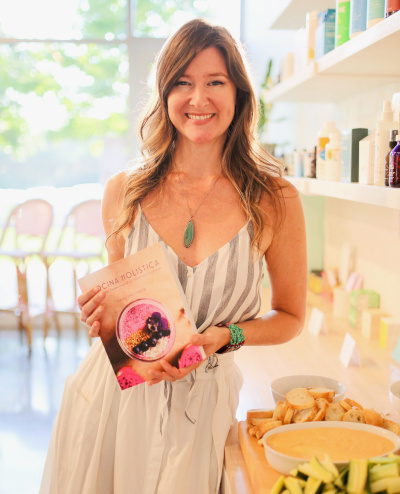 Photography © by Warner Tidwell Photography, used with permission from Veriditas Publishing
Photography © by Warner Tidwell Photography, used with permission from Veriditas PublishingKassia Emily Fiedor is a Holistic Nutritionist, Herbalist, and Private Chef from Southern California, currently based in Nashville. Passionate about using plants, herbs, & vegetables as medicine, she encourages her clients to eat in harmony with their bodies and nature. Kassia lived in Guatemala for 5 years where she taught healthy cooking classes and made nutrient-dense meals for people with an appreciation for nourishing high-vibration food. Amazed by the abundance of native superfoods, she fostered intimate connections with small organic farmers and artisans producing high-quality products.
In her debut cookbook Cocina Holistica, Kassia infuses ancestral
ingredients into healing plant-based dishes. Drawing upon the
magnificent beauty of Guatemala, she hopes to inspire renewed respect
for indigenous foods in creative, modern recipes. All recipes are
gluten-free, dairy-free, and sugar free, with a focus on
nutrient-density.
Kassia honors her teachers – David Crow, Cheryl
Fromolzer, William Siff, Cahterine Abby Rich, Rosemary Gladstar, Jane
Bothwell, 7song, Paul Bergner, Tami Grooney, and Gail Julian.
Learn more at www.InfusedHolisticKitchen.com
Instagram @infusedholistickitchen
